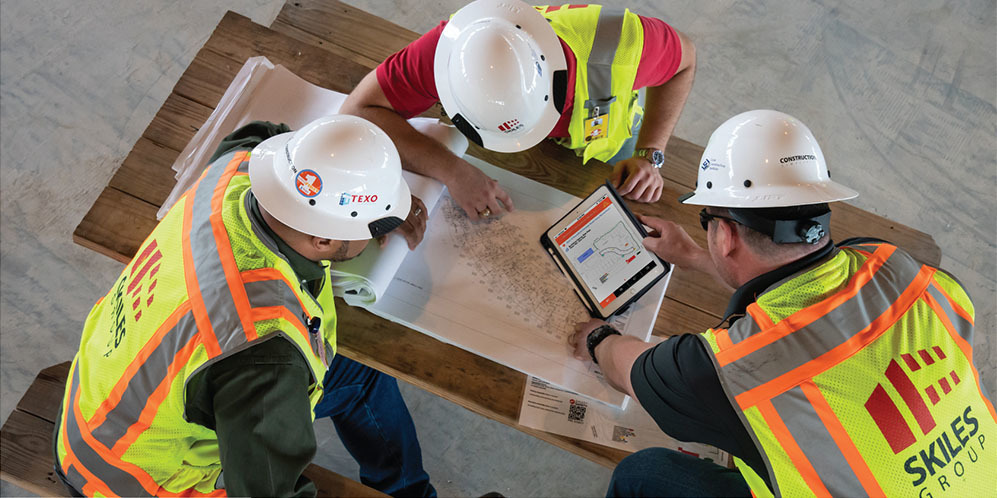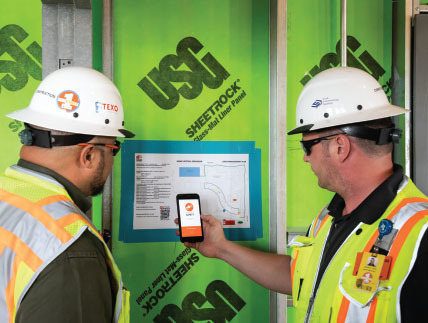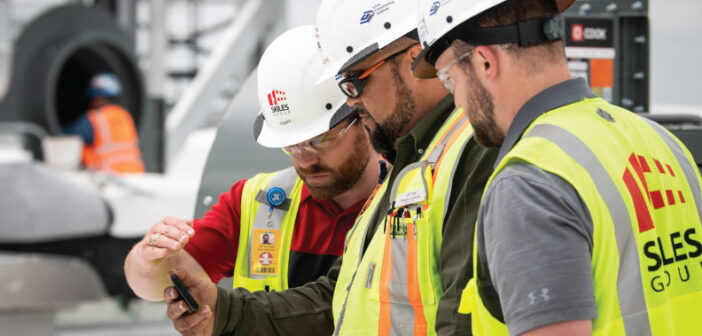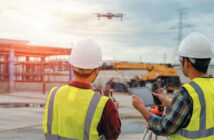BY KEYAN ZANDY
Picture this: you’re working in your office, trailer or construction site when you suddenly hear people yelling these words – “active shooter!”
You gather with a group of people and begin trying to determine who knows what – and, more importantly, how much danger you’re currently facing. What do you think you would be feeling in that moment? What answers would you need? And where would you look to get that information?
I don’t have to imagine this scenario, because one of our project teams lived it.

A few years ago, an active-shooter situation developed on a property adjacent to a large jobsite of ours in another state. The relay of accurate information was hampered by the sheer size of our project (we were present on multiple floors of an occupied hospital) and the quantity of people working that day, with more than 100 trade partners and laborers onsite. Answers to urgent, important questions like – Where is the gunman? Is our site on lockdown? Has anyone been hurt? What are we supposed to be doing? – were difficult to acquire and disseminate, and the lack of information understandably sent ripples of anxiety and uncertainty across our entire project team.

Fortunately, the situation was resolved without anyone being hurt, but the experience led us to ask ourselves other kinds of urgent and important questions, like: What if this event had resulted in a different outcome? Do we feel like we could have done more, or something better, during this crisis? How can we improve the way we currently communicate during an emergency to save time, and, possibly lives? These questions drove our safety director, our field teams and our firm’s leadership to dedicate considerable time, thought and financial resources toward determining what additional tools and training we might utilize to better the outcome of any future, hypothetical emergency situations.
STARTING FROM WHERE YOU ARE
“For the longest time, our industry standard has been an air horn for issuing an emergency alert across our project sites,” explained Skiles Group’s safety director, Brian Webster. “Three long blasts to evacuate the area to the assembly point, or three short blasts to shelter in place. However, this is just not useful when our project is in an operational hospital or other occupied facility, or when those sounds are compromised by the inherent noise level of equipment. It’s also not effective on dynamic project locations where the workers are spread across a large campus and, in certain types of emergencies, sounding this type of alarm could draw unwanted attention from an assailant and prove to be more harmful than beneficial.”
THE SOLUTION SEEMED SO OBVIOUS THAT IT CAME AS A SURPRISE IT DIDN’T ALREADY EXIST: A SMARTPHONE APP.
We believed that providing every team member on a jobsite with quick access to accurate information had the potential to save time and lives, and we agreed that the currently accepted tools (horns, flags, laminated posters placed around the project sites, etc.) were unsatisfactory towards achieving that goal – especially when viewed through the lens of OSHA’s regulations 1910.38 and 1910.165, which explicitly state that construction sites are required to have and maintain an employee alarm system that uses a distinctive signal for each purpose.
Solving the problem of spreading information far and wide caused our team to think smaller instead of broader – specifically, we focused on developing an individually accessed solution for the purpose of either efficiently notifying others of a specific emergency situation, or receiving a notification and immediately understanding what to do next based on that “distinctive signal.”
IT’S EASIER TO IMPLEMENT A TOOL IF IT’S ALREADY IN EVERYONE’S POCKET
The solution seemed so obvious that it came as a surprise it didn’t already exist: a smartphone app. While there were a few applications that did some of what we wanted, none existed that did everything we needed it to do. Ultimately, we took the leap into what was entirely new territory for a construction firm, and in 2018 we embarked on the development of our own app, subsequently named Smart Safety, which provides field staff and project administrators with one-click access to site-specific emergency protocols and resources on all of our active jobsites.
On the back end, the administrator enters the project site’s geolocation and geofencing data and uploads project-specific emergency action information like evacuation plans, rally points, fire extinguishers and the locations of the nearest hospitals and clinics, and closest first responders like fire and police stations. Brian Webster shares, “The app is easy to set up for each project location on top of the company’s usual crisis management planning, and only takes about 15 minutes to create on the smartsafetyalert.com website.”
Each onsite team member – whether a Skiles Group employee, a trade partner foreman or employee, or contractor – downloads the app on their smartphone, and then “checks in” to the project by scanning a QR code or using a PIN at the entrance fences or gates. If the team member sees an emergency, with one-click access they can alert the supervisor to the specific issue (such as medical, fire, gas leak, etc.) and with an automatic tag to the exact location of the situation with geocoordinates. The supervisor verifies the emergency and issues the full alert to all other users onsite. All team members then receive an immediate “distinctive signal” notification for the type of emergency, and information to guide them towards their next steps.

Once the situation is resolved, the team members receive an update for all-clear to resume work.
While a 911 call is always the first step, the push notifications to every team member provide better information faster, reduce confusion and chaos, and ultimately enable employees and trade partners to either quickly evacuate a compromised location, suspend work, or stay clear of an emergency scene that’s occurring in another part of the jobsite. We designed Smart Safety to be bilingual to meet the needs of both English- and Spanish-speaking workers on our jobsites (currently in development for five additional languages), and we made it run as cellular-enabled versus Wi-Fi dependent, to ensure a more reliable connection.
LOOKING TO THE FUTURE WITH A VIEW FROM THE FIELD
We’ve deployed the app a handful of times over the past year for training drills, and with each jobsite formation we introduce the tool to all team members, where it has been met with immense positive reaction. With the participation of the men and women in the field, and their feedback, we can continue to improve the app and the potential benefits if can offer for them.
“As the jobsite evolves and the protocols for an emergency change, the action plan can be updated for all to see instantly,” shares Steve Jones, safety director for DynaTen Corporation. “I like that emergency alerts can be sent out at the push of a button. I’m excited to have a tool that will simplify our joint communications on the jobsite.”
“My project site, with the active shooter situation, could have been improved with the use of Smart Safety,” Dennis Gillispie, senior superintendent with Skiles Group observes. “I think it could be lifesaver when minutes or seconds matter. The tool is especially vital for those sites with larger footprints, vertical work, or multiple entrances.”
Our employee-driven culture of curiosity and continuous improvement fueled the creation of the Smart Safety app, and the result has the potential to create a better working environment for our employees, trade partner teams, and even our clients and public at-large. Beyond our project sites, we’ve just introduced the app to other construction firms to use on their jobsites to help improve their crisis management processes and provide additional communication and clarity for any emergency situation that may occur on their premises. After all, when it comes to safety, we are all in this together.




